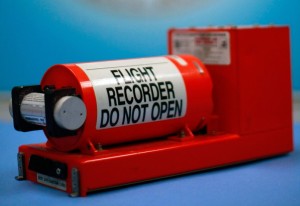Black box

In Melbourne, Australia the Aeronautical Research Laboratories scientist Dr. David Warren was the person who invented the “Black Box” flight data recorder. He was the main person to conceive of the idea of recording the flight crew’s conversation on an airplane and of guarding that recording in the event of a crash or fire. The resolution of the Black Box was to recognize the reasons for a plane crash, by recording any traces in the flight crew’s conversation. Invented in 1953 the Black Box was in production by 1957. The paramount ones were painted bright red or orange to make them easier to find after a crash. Australia was the first country to make flight recorders obligatory in aircraft in the year 1960.
They are generally called black boxes, but the aviation Industry they are called flight data recorder and the cockpit voice recorder are actually orange or red — so they can be more easily spotted. The data recorder logs performance and other metrics which comprise of altitude, speed, and direction. Around a 1000 different measurements can be kept, providing investigators with a rich collection of information. These measurements cover around 25 hours of recording preceding a crash. The voice recorder captures a couple of hours of sound from several microphones placed in the cockpit and other locations of the plane. It runs on a constant loop, so audio from the perilous moments before the plane crash are recorded. Each recorder has its individual beacon, bolted to the exterior of the box, which once activated by water discharges a chirp every second. The chirp can’t be heard by the normal human ear — it requires superior equipment to detect. A beacon’s battery usually last up to 30 days. Once 30 days are over, the pings begin to fade in the same way that a flashlight with old batteries begins to dim. The voice recorders and data are hardened enough and are modified to survive a super-hot temperatures for an hour, stay undamaged during a violent impact, and survive the tremendous pressure of being below 20,000 feet (more than 6,000 meters) of water (ocean depth in the search area averaged 10,000 to 15,000 feet (3,000 to 4,500 meters. The flight data recorder normally retains its data for at least two years.



